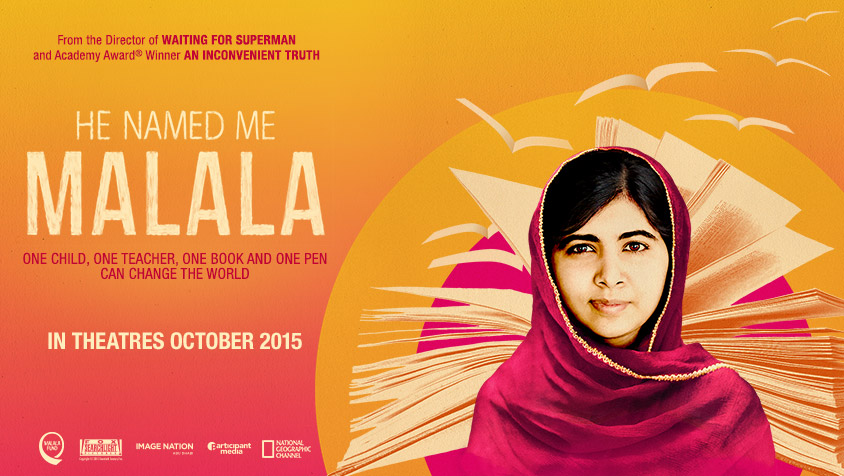Review: He Named Me Malala
An inspirational look into a young woman’s life
Earlier this month, I had the pleasure of attending the advance screening of He Named Me Malala at Innis Town Hall. He Named Me Malala is a documentary that follows Malala Yousafzai and her life in the aftermath of the terrorist attack she survived in Swat Valley, Pakistan. On October 9, 2012, Malala was shot by the Taliban on the left side of her forehead. She was targeted because she had spoken up for girls’ rights to education after the terrorist group tried to ban them from attending school. Malala miraculously survived the attack, and now lives with her family in Birmingham, England. She is the youngest recipient of Nobel Peace Prize.
The film uses a combination of animation, live re-enactment, and interviews to display the complexity of Malala’s journey. He Named Me Malala focuses deeply on how Malala is a normal girl with some extraordinary circumstances. She bickers with her two brothers constantly, uses social media platforms such as Facebook and Twitter, and studies hard in school. The documentary offers the audience an opportunity to view Malala’s personal life, and reminds us that in addition to being a strong, heroic activist of girls’ and women’s rights, Malala is also a teenage girl that faces the same academic, social, and familial challenges of other teenagers her age. She gets frustrated when she doesn’t perform as well as she had hoped on tests, she sometimes finds it hard to relate to her friends at school, and tries her best to help her mother adjust to their new home in England.
After Malala recovers from the attack, she gains worldwide attention for sparking the fight for girls’ educational rights in developing countries. The film displays the flurry of media attention that Malala receives during this time, as well as attention from high-profile individuals such as Barack Obama, Queen Elizabeth, and Bono. She travels to other countries, helping to build schools and support those in underprivileged communities. Malala delivers a speech at the United Nations that earns her a standing ovation. But at the end of the day, as she comments on all the homework she has to complete, viewers are again reminded that despite being a humanitarian activist, Malala is still a young teenage girl.
One special aspect of the film is Malala’s relationship with her father, Ziauddin Yousafzai. She spends most of her time with him and it’s evident that her passion for education has been greatly influenced by him. Ziauddin Yousafzai, quite unlike many fathers of the Swat Valley, actively encourages and supports Malala in her fight for girls’ education rights. The support he shows for his daughter is so wholehearted, that he even feared she would blame him for not restricting her voice and keeping her safe from the Taliban. When asked whether it was her father who made her destiny, Malala has a simple reply: “He named me Malala. But he didn’t make me Malala. I chose this life.”
Malala’s story is inspirational and eye-opening. This film is a must-see for everyone.
